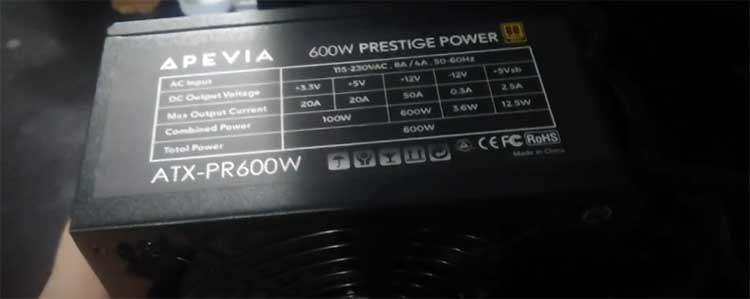I’ve dropped my phone enough times to know a good case is worth its weight in gold.
Ringke and Spigen are two brands I keep coming back to for their balance of style, protection, and price.
In this article, I share my hands-on experience with both, comparing their key features, pros, and cons to help you choose.
From grip to durability, I’ll break it down in a detailed, real-user showdown.
Let’s find out which case deserves to protect your phone!
Comparison Table: Ringke Vs. Spigen
| Feature | Ringke | Spigen |
| Price Range | $8-$25 | $10-$70 |
| Material | TPU, polycarbonate | TPU, polycarbonate, aramid |
| Drop Protection | Military-grade (most models) | Up to 13 feet (Tough Armor) |
| Grip | Textured, grippy | Varies (Liquid Air grippy, Ultra Hybrid slippery) |
| MagSafe Compatibility | Yes (select models) | Yes (most premium models) |
| Camera Protection | Raised lips | Raised lips, some with camera buttons |
| Clear Case Durability | Matte resists yellowing | Some yellowing (Ultra Hybrid) |
| Accessories | Lanyard holes | Kickstands, card holders |
| Best For | Budget, style | Premium features, variety |
| Weight | 28-35g (Onyx, Fusion) | 30-40g (Liquid Air, Tough Armor) |
My Experience with Ringke Cases
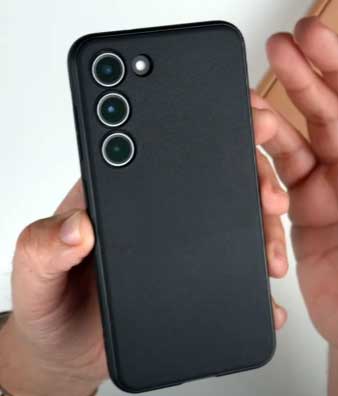
I first tried Ringke’s Onyx case on my Samsung Galaxy S23, and it was love at first grip.
The textured back felt like it was made for my clumsy hands, preventing slips during my morning coffee juggle.
It’s slim, weighing about 32 grams, and the matte finish didn’t show fingerprints.
I dropped my phone from a table—about three feet—and the Onyx’s raised lips kept the screen and camera unscathed.
The lanyard holes were a nice touch; I looped a strap for extra security.
Wet hands made the sides a bit slick, though.
You’ll like Ringke for its affordability and grip, but it’s not perfect for heavy drops.
My Experience with Spigen Cases
Spigen’s Ultra Hybrid was my next test on my iPhone 14 Pro.
The clear design showed off the phone’s color, but it yellowed slightly after three months.
The Air Cushion technology saved my phone from a four-foot drop onto tiles, no cracks in sight.
I also tried the Tough Armor with its kickstand—perfect for hands-free Netflix.
The buttons were clicky, but the Liquid Air model felt slippery without textured sides.
Spigen’s premium Enzo Aramid case, at $70, felt luxurious with metal buttons.
You’ll love Spigen’s variety, but some models sacrifice grip for style.
What Makes Ringke Stand Out
Ringke, founded in 2003 in South Korea, focuses on slim, affordable cases with practical features.
Their Fusion and Onyx lines, priced $8-$25, use TPU and polycarbonate for military-grade drop protection.
The Fusion-X offers rugged bumpers, while the Onyx has a sandstone-like texture for grip.
Most models include lanyard holes and raised lips for screen and camera protection.
The matte clear Fusion resists yellowing better than most.
I found the fit snug, with precise cutouts for ports and buttons.
You’ll appreciate Ringke’s budget-friendly style, though some models feel bulky for slim phones.
What Makes Spigen Stand Out
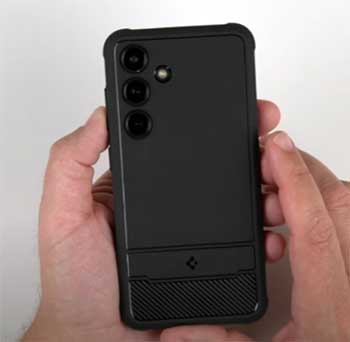
Spigen, also South Korean since 2004, offers a broader range, from the $15 Liquid Air to the $70 Enzo Aramid.
Their cases use TPU, polycarbonate, or aramid fiber, with Air Cushion technology for shock absorption.
The Tough Armor’s 13-foot drop rating impressed me, and MagSafe compatibility is standard in premium models.
The Ultra Hybrid T includes a camera control button for iPhones, and the Classic C1 mimics retro iMac designs.
You’ll enjoy Spigen’s tech-heavy features, but clear cases may yellow, and some lack grip.
How They Fit Into My Daily Life
Ringke’s Onyx was my go-to for casual days.
Its slim profile slipped into my jeans without bulk, and the grip kept my phone secure while texting on the go.
I used the lanyard hole for a wrist strap during hikes.
Spigen’s Tough Armor was my travel buddy, with the kickstand propping my phone for airport movie sessions.
The Ultra Hybrid worked for showing off my phone’s color at work, though I swapped it out when yellowing started.
You’ll pick Ringke for lightweight grip and Spigen for rugged versatility.
Key Features of Ringke Cases
Ringke’s lineup, like the Fusion ($10-$20) and Onyx ($8-$15), uses TPU and polycarbonate for durability.
Military-grade drop protection handles 4-6 foot drops, with raised lips shielding screens and cameras.
The matte finish on clear cases resists yellowing, and textured sides enhance grip.
Lanyard holes add practicality, and MagSafe is available on select models.
The Fusion-X’s rugged bumper suits outdoor use.
You’ll find Ringke’s cases slim yet protective, though button responsiveness varies.
Key Features of Spigen Cases
Spigen’s range includes the Liquid Air ($15-$20), Ultra Hybrid ($20-$30), and Tough Armor ($25-$40).
Air Cushion technology absorbs shocks, with some models rated for 13-foot drops.
MagSafe compatibility is strong, especially in the Enzo Aramid ($70).
The Ultra Hybrid T has a camera control button, and the Tough Armor includes a kickstand.
Clear cases show off phone colors but may yellow.
You’ll love Spigen’s tech and variety, but grip can be hit-or-miss.
Pros of Ringke:
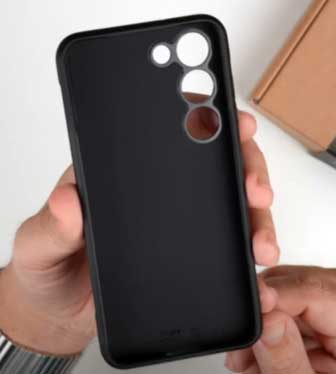
- Affordable: $8-$25, often cheaper than Spigen.
- Grippy texture: Onyx and Fusion-X prevent slips.
- Yellowing resistance: Matte clear cases stay clean longer.
- Military-grade protection: Survives 4-6 foot drops.
- Lanyard holes: Practical for straps or charms.
- Slim design: Adds minimal bulk (28-35g).
- Precise cutouts: Easy access to ports and buttons.
- Variety: Fusion, Onyx, and Rugged Gear options.
- MagSafe support: Available in select models.
- South Korean quality: Reliable manufacturing.
Cons of Ringke:
- Weaker camera protection: Lips could be higher.
- Slick when wet: Sides lose grip with moisture.
- Bulky Fusion-X: Feels heavy on slim phones.
- Limited premium options: No luxury materials.
- Button responsiveness: Some models feel mushy.
- No kickstands: Lacks Spigen’s hands-free feature.
- Dust attraction: Clear backs collect debris.
- Less variety: Fewer styles than Spigen.
- Corner fit: Onyx can feel loose.
- Heat retention: Onyx may warm during heavy use.
Pros of Spigen:

- Versatile lineup: From Thin Fit to Enzo Aramid.
- Strong protection: Tough Armor survives 13-foot drops.
- MagSafe strength: Reliable with chargers and wallets.
- Kickstand options: Tough Armor and Ultra Hybrid S.
- Camera button: Ultra Hybrid T enhances iPhone use.
- Air Cushion technology: Absorbs shocks effectively.
- Premium materials: Aramid fiber in Enzo line.
- Clicky buttons: Responsive across most models.
- Stylish designs: Classic C1, retro-inspired.
- Affordable base models: Liquid Air at $15-$20.
Cons of Spigen:
- Yellowing clear cases: Ultra Hybrid discolors fast.
- Slippery models: Liquid Air lacks side grip.
- Expensive premium: Enzo Aramid costs $70.
- Bulkier options: Tough Armor adds weight (40g).
- No lanyard holes: Less practical for straps.
- Inconsistent grip: Varies by model.
- Sharp edges: Core Armor can feel rough.
- Replacement parts: Most aren’t replaceable.
- Logo visibility: Spigen branding prominent.
- Overheating: Some models trap heat.
I found Ringke’s Onyx perfect for budget-conscious days, with its grip and slim fit.
Spigen’s Tough Armor saved my phone during clumsy moments, and the kickstand was a bonus.
You’ll choose Ringke for value and grip or Spigen for premium features and durability.
Maintenance Tips for Ringke and Spigen Cases
- Clean weekly: Use mild soap and a microfiber cloth.
- Avoid sunlight: Prevents yellowing in clear cases.
- Check fit: Ensure snugness to avoid dust buildup.
- Remove carefully: Prevent scratches on phone frame.
- Store dry: Avoid moisture to maintain grip.
- Replace yearly: TPU degrades after 12-18 months.
- Use alcohol wipes: Remove smudges from matte finishes.
- Inspect corners: Ensure lips stay raised for protection.
- Avoid abrasive surfaces: Prevents scratches on clear backs.
- Test MagSafe: Realign magnets if connectivity weakens.
I clean my Ringke Onyx with a damp cloth weekly and store it away from sunlight.
For Spigen’s Ultra Hybrid, I use alcohol wipes to keep it clear.
You’ll want to clean regularly and replace cases annually to maintain protection.
Comparison with Other Brands
- Ringke Vs. OtterBox
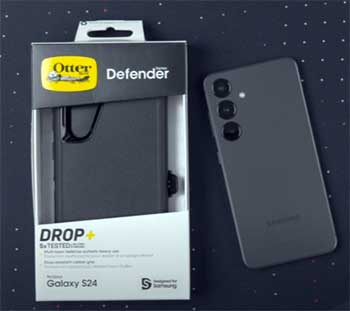
OtterBox’s Defender ($50-$60) is bulkier but offers 10+ foot drop protection and port covers.
I found it too heavy for daily use compared to Ringke’s Onyx, which is slimmer but less rugged.
OtterBox suits construction workers; Ringke is better for casual users.
- Ringke Vs. Caseology
Caseology’s Wavelength ($15-$25) has a ribbed back for grip, similar to Ringke’s Onyx.
I noticed Caseology’s buttons were less clicky, and it attracted dust.
Ringke’s matte finish and lanyard holes give it an edge for budget buyers.
- Spigen Vs. OtterBox
Spigen’s Tough Armor is less bulky than OtterBox’s Defender but offers similar drop protection.
I preferred Spigen’s kickstand for convenience, though OtterBox’s port covers block dust better.
Spigen is ideal for daily use; OtterBox for extreme conditions.
- Spigen Vs. UAG
UAG’s Monarch ($45) is rugged like Spigen’s Tough Armor but heavier.
I found UAG’s grip better but its bulk overwhelming.
Spigen’s slimmer profile and MagSafe compatibility make it more versatile.
Performance Across Use Cases
Ringke’s Onyx was my pick for casual outings, slipping into pockets easily.
It handled 4-foot drops well but struggled with camera protection on uneven surfaces.
Spigen’s Ultra Hybrid shone for showing off my phone’s color, and the Tough Armor’s kickstand was great for video calls.
For heavy drops, Spigen’s 13-foot rating outperformed Ringke’s 6-foot max.
You’ll choose Ringke for lightweight style and Spigen for rugged or tech-heavy needs.
Build Quality and Materials
Ringke’s TPU and polycarbonate cases are lightweight (28-35g) and durable, with matte finishes resisting fingerprints.
The Fusion-X’s rugged bumper adds bulk but boosts protection.
Spigen’s cases use similar materials, with the Enzo Aramid adding premium aramid fiber.
Both brands, made in South Korea, ensure high manufacturing standards.
I found Spigen’s buttons clickier, but Ringke’s slim fit felt less intrusive.
You’ll trust both for quality, but Spigen feels more premium.
Who Should Use These Cases
Ringke suits budget-conscious users who want grip and style without bulk.
The Onyx is perfect for daily commuters or students.
Spigen’s range fits tech enthusiasts needing MagSafe or kickstands, and the Tough Armor is great for frequent droppers.
If you want luxury, Spigen’s Enzo Aramid stands out.
You’ll pick based on your budget and lifestyle—Ringke for value, Spigen for features.
Also Read: Comparison of Caseology Vs. Spigen
Safety and Precautions
Clean cases with non-abrasive materials to avoid scratches.
Avoid direct sunlight to prevent yellowing or heat buildup.
Check for loose fit to ensure drop protection.
Use compatible screen protectors to maintain lip coverage.
Test MagSafe accessories for secure attachment.
You’ll keep your case effective by cleaning it regularly and storing it properly.
Frequently Asked Questions (FAQs)
Ringke is best for budget and grip; Spigen for premium features and higher drop protection.
OtterBox offers tougher protection for extreme conditions, but Spigen is better for daily use.
No, Ringke is not a Chinese brand; it’s South Korean.
Ringke is from South Korea, founded in 2003.
Final Thoughts
After testing both, Spigen’s Tough Armor wins my vote for its 13-foot drop protection, MagSafe strength, and kickstand.
Ringke’s Onyx is a close second, offering unbeatable grip and value at half the price.
You’ll love Ringke for budget-friendly style or Spigen for rugged versatility.
Choose what fits your life—your phone deserves the best protection!
